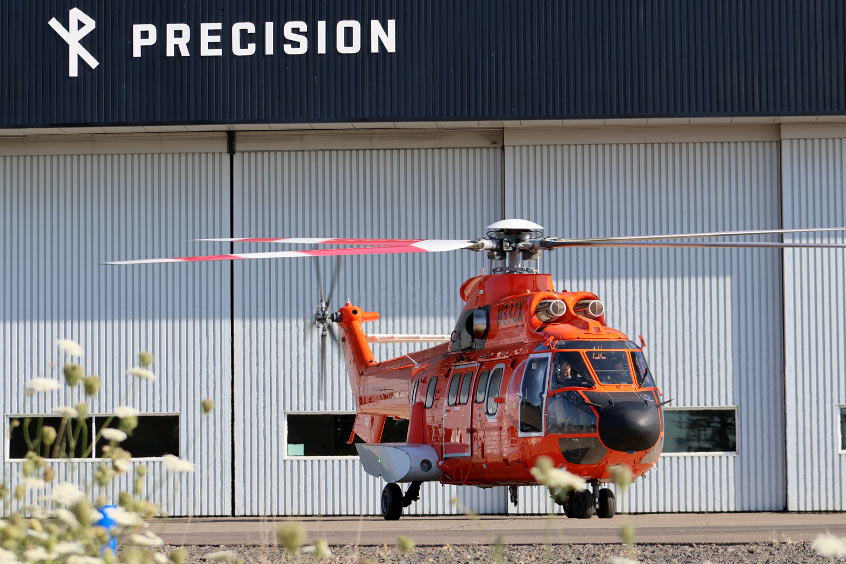ACE 2026 - The home of global charter.
• Precision
Charter
• Precision Support Services
Maintenance
• Airbus Helicopters H215/H225/AS332
BAN's World Gazetteer
• Vermont The bimonthly news publication for aviation professionals.
The bimonthly news publication for aviation professionals.

During the coming quarter, US rotary operator Precision will begin monitoring its fleet of Airbus AS332 Super Puma helicopters with GPMS International's health and monitoring system (HUMS) Foresight MX. Ordered in July 2023, Precision will be the first AS332 operator to utilise advanced HUMS for firefighting support in the US and beyond.
"We're very excited to see HUMS come to life on our Super Pumas," says Grayson Barrows, general manager at Precision's 145 repair station. "Many AS332 operators like us removed the original OEM system many years ago because of how heavy and expensive it was to maintain. We also anticipated potential obsolescence issues and knew we had to get ahead of it to future-proof our aircraft. With Foresight MX, we're getting the most advanced HUMS technology, an easy-to-use interface, and it's backed by our friends at GPMS."
Precision performs a variety of utility missions from its Oregon base with a mixed fleet of aircraft, including the AS332s. As a Part 145 repair station, it knows how powerful HUMS will be for its aircraft, its maintenance team and for many of its customers. Barrows continues: "The predictive capabilities of Foresight MX will allow us to become more proactive rather than reactive, allowing us to shift to more scheduled rather than unscheduled maintenance. With these additional insights, we'll be able to shrink our AOG expenses and be ready to fly when the call comes in to dispatch."
According to Ronnie Ries, vice president of marketing at GPMS, HUMS fast becoming a requirement and not an option is something they're seeing more of. He says: "To win new contracts, operators are always looking to differentiate themselves from their competitors with newer technology and safety certifications. As the contracting agencies start to see how this technology will benefit the mission, they will start including them in future contract requirements within award criteria. For example, task order awards in the new US Forest Service MATOC will be given to operators with 'modern helicopters', which includes HUMS as a minimum aircraft requirement."
While waiting for fire season to start, Precision and GPMS are working hard to complete the certification for the AS332. Barrows continues: "We're the developers and owners of STCs ourselves, so we understand the complexities involved in the process. With GPMS having completed so many STCs already, it's been a very smooth process. We can't wait to start the initial installation in just a few weeks, and we've already heard from other AS332 international operators that are interested in learning more about the system. HUMS is going to be a game changer for us this summer."